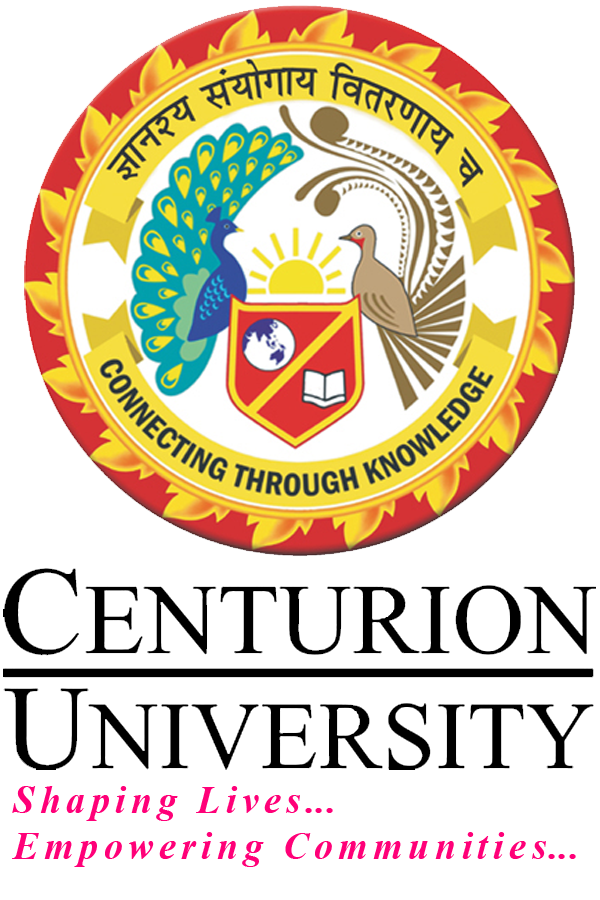MEDICINAL CHEMISTRY – III (Theory)
Course Attendees
Still no participant
Course Reviews
Still no reviews
Course Name : MEDICINAL CHEMISTRY – III (Theory)
Code(Credit) : BPHT3201(4-0-0)
Course Objectives
- This subject is designed to impart fundamental knowledge on the structure, chemistry and therapeutic value of drugs. The subject emphasis on modern techniques of
rational drug design like quantitative structure activity relationship (QSAR), Prodrug
concept, combinatorial chemistry and Computer aided drug design (CADD). The subject
also emphasizes on the chemistry, mechanism of action, metabolism, adverse effects,
Structure Activity Relationships (SAR), therapeutic uses and synthesis of important
drugs.
Learning Outcomes
- Upon completion of the course student shall be able to
1. Understand the importance of drug design and different techniques of drug
design.
2. Understand the chemistry of drugs with respect to their biological activity. 3. Know the metabolism, adverse effects and therapeutic value of drugs.
4. Know the importance of SAR of drugs.
Course Syllabus
UNIT – I
Antibiotics
Historical background, Nomenclature, Stereochemistry, Structure activity
relationship, Chemical degradation classification and important products of
the following classes.
β-Lactam antibiotics: Penicillin, Cepholosporins, β- Lactamase inhibitors,
Monobactams
Aminoglycosides: Streptomycin, Neomycin, Kanamycin
Tetracyclines: Tetracycline,Oxytetracycline, Chlortetracycline, Minocycline, Doxycycline
UNIT – II
Antibiotics
Historical background, Nomenclature, Stereochemistry, Structure activity
relationship, Chemical degradation classification and important products of
the following classes.
126
Macrolide: Erythromycin Clarithromycin, Azithromycin.
Miscellaneous: Chloramphenicol*, Clindamycin.
Prodrugs: Basic concepts and application of prodrugs design.
Antimalarials: Etiology of malaria. Quinolines: SAR, Quinine sulphate, Chloroquine*, Amodiaquine, Primaquine phosphate, Pamaquine*, Quinacrine hydrochloride, Mefloquine. Biguanides and dihydro triazines: Cycloguanil pamoate, Proguanil.
Miscellaneous: Pyrimethamine, Artesunete, Artemether, Atovoquone.
UNIT – III
Anti-tubercular Agents
Synthetic anti tubercular agents: Isoniozid*, Ethionamide, Ethambutol,
Pyrazinamide, Para amino salicylic acid.*
Anti tubercular antibiotics: Rifampicin, Rifabutin, Cycloserine
Streptomycine, Capreomycin sulphate.
Urinary tract anti-infective agents
Quinolones: SAR of quinolones, Nalidixic Acid,Norfloxacin, Enoxacin,
Ciprofloxacin*, Ofloxacin, Lomefloxacin, Sparfloxacin, Gatifloxacin,
Moxifloxacin
Miscellaneous: Furazolidine, Nitrofurantoin*, Methanamine. Antiviral agents:
Amantadine hydrochloride, Rimantadine hydrochloride, Idoxuridine
trifluoride, Acyclovir*, Gancyclovir, Zidovudine, Didanosine, Zalcitabine,
Lamivudine, Loviride, Delavirding, Ribavirin, Saquinavir, Indinavir,
Ritonavir.
UNIT – IV 08 Hours
Antifungal agents:
Antifungal antibiotics: Amphotericin-B, Nystatin, Natamycin, Griseofulvin.
Synthetic Antifungal agents: Clotrimazole, Econazole, Butoconazole,
Oxiconazole Tioconozole, Miconazole*, Ketoconazole, Terconazole,
Itraconazole, Fluconazole, Naftifine hydrochloride, Tolnaftate*. Anti-protozoal Agents: Metronidazole*, Tinidazole, Ornidazole, Diloxanide, Iodoquinol, Pentamidine Isethionate, Atovaquone, Eflornithine.
Anthelmintics: Diethylcarbamazine citrate*, Thiabendazole, Mebendazole*,
Albendazole, Niclosamide, Oxamniquine, Praziquantal, Ivermectin.
127
Sulphonamides and Sulfones
Historical development, chemistry, classification and SAR of Sulfonamides:
Sulphamethizole, Sulfisoxazole, Sulphamethizine, Sulfacetamide*,
Sulphapyridine, Sulfamethoxaole*, Sulphadiazine, Mefenide acetate, Sulfasalazine.
Folate reductase inhibitors: Trimethoprim*, Cotrimoxazole.
Sulfones: Dapsone*.
UNIT – V
Introduction to Drug Design
Various approaches used in drug design.
Physicochemical parameters used in quantitative structure activity
relationship (QSAR) such as partition coefficient, Hammet’s electronic
parameter, Tafts steric parameter and Hansch analysis.
Pharmacophore modeling and docking techniques. Combinatorial Chemistry: Concept and applications
chemistry: solid phase and solution phase synthesis.
of combinatorial
Session Plan
Session 1
Antibiotics
Historical background, Nomenclature, Stereochemistry, Structure activity
relationship, Chemical degradation classification and important products of
the followingpenicillin,cephallosporine, beta-lactamase, monobactam
Session 2
β-Lactam antibiotics: Penicillin, Cepholosporins, β- Lactamase inhibitors,
Monobactams
Aminoglycosides: Streptomycin, Neomycin, Kanamycin
Session 11
Anti tubercular antibiotics: Rifampicin, Rifabutin, Cycloserine
Streptomycine, Capreomycin sulphate.
Urinary tract anti-infective agents
Quinolones: SAR of quinolones, Nalidixic Acid,Norfloxacin, Enoxacin,
Ciprofloxacin*, Ofloxacin, Lomefloxacin, Sparfloxacin, Gatifloxacin,
Moxifloxacin
https://www.youtube.com/watch?v=sk1uf6CaE8M
Session 10
Anti-tubercular Agents
Synthetic anti tubercular agents: Isoniozid*, Ethionamide, Ethambutol,
Pyrazinamide, Para amino salicylic acid.*
Session 8
Miscellaneous: Pyrimethamine, Artesunete, Artemether, Atovoquone.
https://pharmawiki.in/b-pharmacy-3rd-year-subjects-syllabus-pdf-b-pharm-second-year-5-6-semester/
Session 7
Quinolines: SAR, Quinine sulphate, Chloroquine*, Amodiaquine, Primaquine phosphate, Pamaquine*, Quinacrine hydrochloride, Mefloquine. Biguanides and dihydro triazines: Cycloguanil pamoate, Proguanil.
Session 6
Prodrugs: Basic concepts and application of prodrugs design.
Antimalarials: Etiology of malaria.
Session 5
Macrolide: Erythromycin Clarithromycin, Azithromycin.
Miscellaneous: Chloramphenicol*, Clindamycin.
Session 4
Antibiotics
Historical background, Nomenclature, Stereochemistry, Structure activity
relationship, Chemical degradation classification and important products of
the following
Session 3
Tetracyclines: Tetracycline,Oxytetracycline, Chlortetracycline, Minocycline, Doxycycline
Session 12
Miscellaneous: Furazolidine, Nitrofurantoin*, Methanamine. Antiviral agents:
Amantadine hydrochloride, Rimantadine hydrochloride, Idoxuridine
trifluoride, Acyclovir*, Gancyclovir, Zidovudine, Didanosine, Zalcitabine,
Lamivudine, Loviride, Delavirding, Ribavirin, Saquinavir, Indinavir,
Ritonavir.
https://www.youtube.com/watch?v=1inyGyecT8I
https://pharmawiki.in/b-pharmacy-3rd-year-subjects-syllabus-pdf-b-pharm-second-year-5-6-semester/
Session 13
Antifungal agents:
Antifungal antibiotics: Amphotericin-B, Nystatin, Natamycin, Griseofulvin.
Synthetic Antifungal agents: Clotrimazole, Econazole, Butoconazole,
Oxiconazole Tioconozole, Miconazole*, Ketoconazole, Terconazole,
Itraconazole, Fluconazole, Naftifine hydrochloride, Tolnaftate*.https://pharmawiki.in/b-pharmacy-3rd-year-subjects-syllabus-pdf-b-pharm-second-year-5-6-semester/
https://www.osmosis.org/learn/Miscellaneous_antifungal_medications
Session 14
Anti-protozoal Agents: Metronidazole*, Tinidazole, Ornidazole, Diloxanide, Iodoquinol, Pentamidine Isethionate, Atovaquone, Eflornithine.
Anthelmintics: Diethylcarbamazine citrate*, Thiabendazole, Mebendazole*,
Albendazole, Niclosamide, Oxamniquine, Praziquantal, Ivermectin.
https://www.youtube.com/watch?v=UmXMxh9jf80
https://pharmawiki.in/b-pharmacy-3rd-year-subjects-syllabus-pdf-b-pharm-second-year-5-6-semester/
Session 15
Sulphonamides and Sulfones
Historical development, chemistry, classification and SAR of Sulfonamides:
Sulphamethizole, Sulfisoxazole, Sulphamethizine, Sulfacetamide*,
Sulphapyridine, Sulfamethoxaole*, Sulphadiazine, Mefenide acetate, Sulfasalazine.
Session 16
Folate reductase inhibitors: Trimethoprim*, Cotrimoxazole.
Sulfones: Dapsone*.
Session 17
Introduction to Drug Design
Various approaches used in drug design.
Physicochemical parameters used in quantitative structure activity
relationship (QSAR) such as partition coefficient, Hammet’s electronic
parameter, Tafts steric parameter and Hansch
Session 18
Pharmacophore modeling and docking techniques. Combinatorial Chemistry: Concept and applications
chemistry: solid phase and solution phase synthesis.
References
Recommended Books (Latest Editions)
1. Wilson and Giswold’s Organic medicinal and Pharmaceutical Chemistry.
2. Foye’s Principles of Medicinal Chemistry.
3. Burger’s Medicinal Chemistry, Vol I to IV.
4. Introduction to principles of drug design- Smith and Williams.
5. Remington’s Pharmaceutical Sciences.

Our Main Teachers

A.Avinash working as Assistant Professor, Dept of CSE, Centurion University of Technology and Management, Andhra Pradesh . Interested to work on Machine learning,Natural Language Processing,Problem Solving Methodologies , and ChatBot. Programming Skill: C Programming Data Structure Object Oriented Programming using C++ Formal Language Automata Theory Python Web Development(HTML,CSS,PHP) Database Management Systems Compilers


Recent Comments